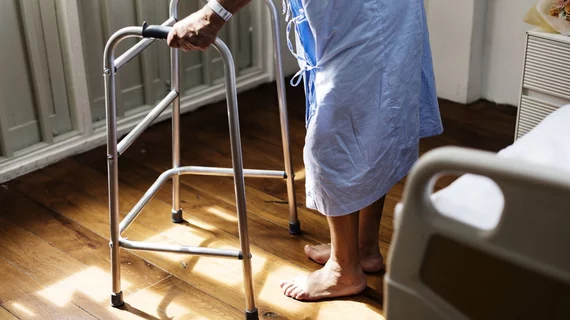Osteosarcopenia linked to much higher risk of death after TAVR—CT screening may prove valuable
Osteosarcopenia, an age-related condition associated with deterioration in the muscles and bones, nearly triples a patient’s risk of dying after transcatheter aortic valve replacement (TAVR), according to new findings published in JAMA Cardiology.[1]
“Osteosarcopenia is the concomitant presence of low bone density (osteopenia or osteoporosis) and low muscle mass and quality (sarcopenia),” explained first author Pablo Solla-Suarez, MD, MSc, a geriatrician with McGill University in Montreal, and colleagues. “Osteoporosis results in decreased bone strength, causing increased risk of fractures. Sarcopenia results in decreased muscle strength, causing increased risk of falls and sedentariness. Together, they predispose patients to accelerated decline in functional status.”
Solla-Suarez et al. reviewed data from more than 600 patients aged 70 years old or older who underwent TAVR from 2012 to 2022. The mean age was 82.6 years old and 55% of patients were men. All patients were treated in one of 14 centers in the United States, Canada or France. Data was originally collected for the FRAILTY-AVR clinical trial.
Axial CT images were used to evaluate each patient’s muscles and bones before they underwent TAVR. Overall, 15% of patients had CT-confirmed osteosarcopenia, 25% had low vertebral bone density (VBD) alone, 21% had low psoas muscle area (PMA) alone and 39% had “normal” bone and muscle status.
After one year, all-cause mortality was reported in 32% of patients with osteosarcopenia, 14% of patients with low PMA alone, 11% of patients with low VBD alone and 9% of patients with normal bone and muscle status.
In addition, even after adjusting for a variety of factors, osteosarcopenia was independently associated with an increased risk of all-cause mortality or worsening disability after one year.
“To our knowledge, this is first study to examine the prognostic impact of osteosarcopenia in older cardiovascular patients, specifically those with severe aortic stenosis undergoing TAVR,” the authors wrote. “Radiographic assessment of osteosarcopenia proved to be a valid and efficient approach to screen patients and identify a subpopulation with high rates of frailty, fractures, disability and malnutrition. After adjusting for clinical risk factors and frailty scores, osteosarcopenia—but not low PMA or VBD alone—was associated with a three-fold increase in risk of fatal adverse events and a two-fold increase in worsening disability at one year.”
The group also noted that screening patients for evidence of osteosarcopenia could help care teams make key decisions when considering revascularization, mechanical circulatory support or mitral/tricuspid valve interventions.
Read the full analysis here.

